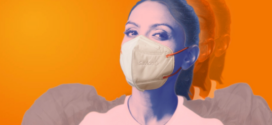The brain regulates the movements of skeletal muscles through specific nerves. The combination of the nervous system and muscles working together to let movement is termed the neuromuscular system. These muscles are called voluntary muscles, the muscles one can choose to move, such as ones in arms, legs, or face.
If a person wants to move a part of the system, then a message is sent to neurons called upper motor neurons. Upper motor neurons have long tails (axons) that travel into and via the brain and into the spinal cord, where they link with lower motor neurons. At the spinal cord, the lower motor neurons send their axons via nerves in the arms and legs directly to the muscle they control.
A muscle is tuned by more than 650 lower motor neurons and each of which is subdivided into several tiny branches. The tip of each branch is called a presynaptic terminal, and this connection is called the neuromuscular junction.
What Are Neuromuscular Disorders?
Neuromuscular disease affects the function and working of muscles due to problems with the nerves and muscles in the body. Several diseases are classified as neuromuscular disorders. Some of them are caused by inherited conditions, hormonal issues, and autoimmune disorders. The typical sign of these diseases is muscle weakness.
Common Neuromuscular Disorders
Amyotrophic Lateral Sclerosis (ALS): This condition results in the loss of nerve cells in the brain and spinal cord, where muscle weakness causes trouble with movement and speech.
Charcot-Marie-Tooth disease (CMT): It is a group of inherited disorders; initial symptoms include weakness in the lower limbs, feet, and hands. This condition progresses gradually and may not impede a person’s quality of life.
Chronic Inflammatory Demyelinating Polyneuropathy (CIDP): It leads to weakness in the arms and legs. It is caused by autoimmune disorders that affect the insulation surrounding the myelin sheath (peripheral nerves).
Guillain-Barré Syndrome (GBS): The myelin sheath is affected and leads to weakness in the legs, progressing rapidly to the rest of the body. It is caused when the immune system attacks the peripheral nervous system
Lambert-Eaton syndrome: It is an autoimmune condition that leads to weakness and exhaustion in the arms and leg muscles.
Multiple Sclerosis (MS): In this condition, the myelin sheath around the peripheral nerves are attacked by the immune system. It usually affects the brain, spinal cord, and optic nerves.
Myasthenia Gravis: It is an autoimmune condition caused by damage to muscle receptors, which leads to muscle weakness throughout the system. Some symptoms include weakness in the arms and legs, vision problems, and speaking and eating difficulties.
Peripheral Neuropathy: This disorder affects the nerves in the brain and spinal cord. It results in weakness, pain, and numbness in the extremities.
Spinal Muscular Atrophy (SMA): A group of genetically inherited disorders leads to hypotonia in the arms and legs and breathing problems.
Symptoms
Generally, the symptoms of a neuromuscular disorder may vary by the condition one has. Also, a person’s symptoms may vary from mild to moderate to life-threatening. The onset of symptoms may range from childhood to adulthood. The progress may be slow, rapid, or even change. Common symptoms include:
- Muscle weakness
- Muscles wasting
- Muscles cramps
- Muscles stiffness
- Pain in the muscles
- breathing difficulty
- Problem swallowing
- Balance and movement problems
- Poor vision
Causes
The exact cause of some neuromuscular disorders is unknown. Some of the reasons may include the following:
- Genetic mutation
- Viral infection
- Autoimmune disorder
- Hormonal problem
- Metabolic disorder
- Dietary deficiency
- Use of certain drugs/ poisons
Diagnosis
The healthcare provider will initially examine the person thoroughly, test reflexes, and look out for any signs of loss of muscle tone(atrophy). Then the following tests may be recommended to confirm the diagnosis:
- Blood tests to check for levels of certain enzymes
- Electromyography to determine the electrical activity in the muscles
- MRI to evaluate for problems with the brain and spinal cord
- Spinal tap to test the cerebrospinal fluid
- Nerve conduction velocity testing to assess how well messages are being sent from the nerves to the muscles
- Muscle biopsies to monitor the functioning of the muscle tissue
- Genetic testing to check for any mutations that may have been inherited
Treatment
Neuromuscular disorders cannot be completely cured, but treatment may help alleviate symptoms and slow the condition’s progression from getting aggravated.
- Doctors may prescribe medications to help ease muscle pain, weakness, cramps, and stiffness.
- Drugs to improve nerve impulses and strength in the muscles
- Immunosuppressants to treat conditions caused by autoimmune issues
- Immunoglobulin therapy to increase antibodies
Other treatment options include:
- Physical / rehabilitation therapy to revamp muscle tone and work on motor skills
- Occupational therapy to learn new methods to perform routine tasks and preserve energy
- Surgery may be needed for patients with neuropathy to ease pressure on the nerves or to remove the thymus
Authored by Dr. Manish Patni, Consultant – Neuro Physician.
 Newspatrolling.com News cum Content Syndication Portal Online
Newspatrolling.com News cum Content Syndication Portal Online





